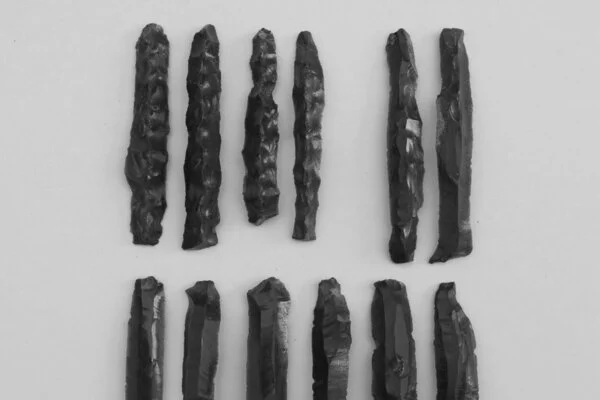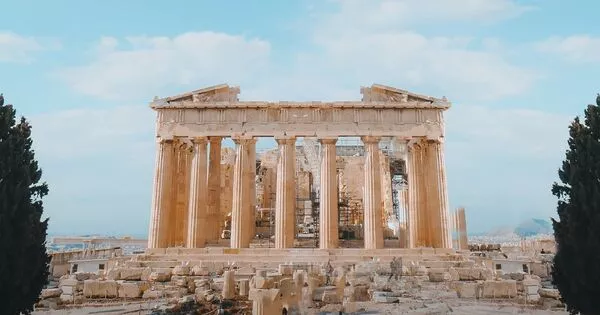Because of the geography of Greece, Ancient Greece was made up of hundreds of essentially independent city-states. Communities were separated by mountains, hills, and water. Rather than a unified nation, Ancient Greece was more like a network of communities with a shared religion and language, which sometimes led to a sense of common belonging.
A modern scientific analysis of ancient stone tools is challenging long-held beliefs about what caused radical change on the island of Crete, where the first European state flourished during the Bronze Age: the ‘Minoan civilization.’
Crete underwent significant cultural transformations around 3,500 years ago, including the adoption of a new language and economic system, burial customs, dress, and drinking habits – all of which could be traced back to the neighboring Mycenaean Greek mainland.
Many important sites on the island were destroyed around the same time, and warriors’ graves appeared at the famed palace of Knossos, leading scholars to believe for a long time that these seismic changes were the result of a Mycenaean invasion.
Our findings suggest a more complex picture than previously believed. While new practices can be initiated through external forces such as invasion, migration, colonialism, or cross-cultural intermarriage, we also know of examples where locals choose to adopt foreign habits to distinguish themselves within their own society.
Tristan Carter
Despite these cultural similarities, city-state alliances were shaky and fleeting. For example, the Delian and Peloponnesian Leagues were dominated by a single powerful city-state. Another good example is how conflict with Persia prompted several city-states to band together against a common foe, but not all Greek city-states were involved; additionally, once the external threat was removed, conflict between the city-states resumed.
A new study published online in the journal PLOS One calls that theory into question.
“Our findings suggest a more complex picture than previously believed,” explains Tristan Carter, a lead author of the study and professor in the Department of Anthropology at McMaster University who has conducted research in north-central Crete for nearly three decades.
“Rather than wholescale cultural change, our study has found evidence of significant continuity after the alleged invasion. While new practices can be initiated through external forces such as invasion, migration, colonialism, or cross-cultural intermarriage, we also know of examples where locals choose to adopt foreign habits to distinguish themselves within their own society,” says Carter.

Rather than looking at things like burial, art, or dress, practices that tend to shift with fashion, archaeologists have begun to look more closely at more mundane, everyday practices as a better insight to a culture’s true character, he explains.
For the study, the researchers analyzed a sample of tools the Bronze Age Cretans fashioned from obsidian, a black volcanic glass which is sharper than surgical steel when freshly flaked. Vassilis Kilikoglou, director of the Demokritos national research centre in Athens, used a nuclear reactor to determine the origin of the raw materials and found them to be from the Cycladic island of Melos.
When these results were considered together with the way the obsidian blades had been made and used for work such as harvesting crops, it was clear the community had lived the same way their predecessors had for the past thousand years, which continued to be distinct from life on the Greek mainland.
“Our analysis suggests that the population remained largely local, of Minoan descent,” Carter and Kilikoglou write. “This is not to say that an invasion of Crete did not take place, but that the political situation throughout the rest of the island at the time was more complex than previously thought, with significant demographic continuity in many areas.”
Individuals in Greek society may have had varying degrees of religious belief—and some may have been skeptics—but Greek society could only function as it did because certain fundamentals were widely accepted: gods existed, they could influence human affairs, and they welcomed and responded to acts of piety and worship.
The temple was where religion took on a more formal tone on special occasions. In all major Greek communities, Gods were worshiped at sacred sites and temples during ceremonies led by priests and their attendants.
While local elites were strategically aligned with Mycenaean powers, as evidenced by their conspicuous adoption of mainland styles of dress, drinking, and burial, the researchers believe that most people continued to live their lives in much the same way as before.





